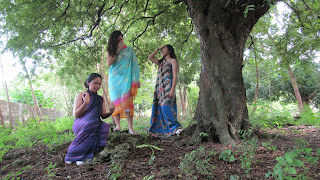SIKALAK AND SIKABAY
Historical Background and Findings
Ancient Filipinos have taken great importance in nature. They revolved their beliefs in accordance with nature and they also worship nature spirits. We can conclude from this fact that ancient Filipinos have realized the role of nature in their lives. They appreciated the gifts of nature and in return, give back to nature by taking care of it. It is a great lesson to us modern Filipinos to learn the impact of our actions on our environment. Let us go back to our roots where nature is the centre of our lives. To stop the current issue of our environmental destruction, we must learn to respect and value nature.
Before the Spanish Colonization, ancient Filipinos had their own culture and beliefs focusing on nature and its spirits.
Most legends, epics, myths and other traditional stories are passed through oral communication from one generation to another, resulting in differences and variety of interpretation.
During the Spanish Conquest, many Spanish conquistadors were amazed by the rich culture and heritage of the Filipinos.
One of these conquistadors is Miguel de Loarca, an ordinary Spanish colonizer who wrote a book entitled "Relacion de las Yslas Filipinas" on 1582.
Loarca tallied the first Philippine census and analysis. He also documented the geography of the country together with its native government, culture, tradition, and beliefs.
As the Spanish colonizers discovered the Philippines, many natives were exposed to a threat which resulted in war and violent tendencies initiated by the Spanish who wanted to impose their own beliefs.
As a sign of respect, Miguel de Loarca extended his hand to the natives who in turn greeted him with their own gesture of respect, one different from what Loarca is familiar with.
The natives shared several stories to Loarca including the origin story of Visayas. They presented it through well-portrayed actions and extreme facial expressions.
THE STORY
The story tells the tale of Sikalak, a young and masculine man coming from a huge bamboo cracked in half, planted by Kaptan; a god that mourned over his lost lover.
Sikalak was not the only man that existed in between the cracks of the bamboo. He came with his twin, Sikabay, the sweet and innocent young lady that had huge respect for her dignity and stood by her principles.
Sikalak and Sikabay were assigned by Kaptan to look over his things while he searches for his lost lover, Magwayan. Sikalak wanted to produce children with Sikabay to have more people to look over Kaptan's treasures. Sikabay immediately declined without hesitation because they were siblings and it would be improper to do so. They asked the birds of the sky and the tunas of the sea for their opinion and they thought it would be great. Still, Sikabay hesitated and asked the earthquake instead. The earthquake agreed it was a good idea so it left Sikabay with no other choice, so they produced creatures and multiplied from generation to generation and the story of Sikalak and Sikabay lives up 'till this day
FINAL THOUGHTS
The rich oral tradition of ancient Filipinos proves us that Filipinos before cherishing socialization among their tribesmen. Because of the modern technology, we Filipinos have resulted to engage in virtual socialization to our friends and family. This is problematic as the intimate nature of personal socialization is now less and less evident in our society.
The current circumstance among urban-dwellers in the Philippines shows that we are not as friendly to our neighbours compared to the previous generations, for example, the youth of today barely knows his/her neighbours nor interacts with them. We can learn from our ancient predecessors this great lesson of socialization and value the richness of our culture together.
B.T.S.
MEMBERS
Oliveron . Rivera . Liao . Novicio . Margallo . Folkestad . Lagumbay . Panonce . Yapit

























Comments
Post a Comment